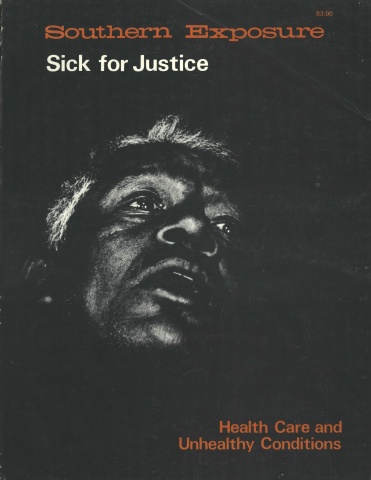Lessons from Community Clinics: Good News and Bad News

This article originally appeared in Southern Exposure Vol. 6 No. 2, "Sick for Justice: Health Care and Unhealthy Conditions." Find more from that issue here.
The community-controlled health center offers the best hope for primary medical care, improving the health of the residents and improving the quality of life in rural, poor or minority communities. However, such clinics or centers are not developed without struggle, and some of the difficulties and pitfalls which await should be understood and squarely faced.
Stability: Community health centers provide a stable source of health care. Even when there is a turnover of health professionals, there is still stability through local boards and a permanent place for the patients’ medical records.
BUT — Patients grow weary of the turnover and uneasy about who is looking at their records and providing care. If communities are to develop stable professional staffs, they must recruit local people, develop scholarship programs and pressure medical schools to admit them.
Practitioner-Staffed Clinics: Areas which can not attract or economically support a physician can use local primary health practitioners to provide services, and even without professional staff, the centers can provide education, screenings and referrals.
BUT — The practitioner-staffed clinic can be just another way of providing poor and rural areas with second-rate service. The redistribution of health professionals and facilities is not addressed, and the highly trained still go to the more prosperous, urban areas.
Not-For-Profit Medicine: The non-profit clinic employing all staff on a salaried basis is less costly; savings can go toward extra services such as home health counseling.
BUT — The clinic competes with the for-profit health system and may have difficulty getting the necessary approval from local medical associations, certification for “corporate practice,” admission to the medical society and hospital privileges for clinic physicians.
Service-Oriented Practice: The centers attract more idealistic, service-oriented physicians and practitioners.
BUT — The demands on time for them are so heavy and the multiple, chronic problems they face so overwhelming that many of them “burn out” in a couple of years. The professional isolation and lack of opportunity for continued professional development is a drawback especially in solo practice, and even the most committed may leave with considerable guilt feelings.
Government-Foundation Funding: HEW, ARC, and foundations such as Robert Wood Johnson provide generous start-up funding for rural health centers.
BUT - For some, the goals and standards which are required can not be sustained. It is extremely difficult to resist the offered treasures, and even more difficult to give them up later.
Community Control: Operation of the health center with community boards allows the community to plan and control their health care.
BUT - Some professionals will not share their expertise or assist boards in developing the necessary skills to manage the clinics. Some boards will not commit the time and effort to cope with budget details, operational procedures and staff relationships. Funding sources, regional HSA planners and other health consultants take away much of the community board’s power. Health centers must develop educational programs for the boards so they can acquire the skills to control their centers’ operations and destiny.
Community Development: Community clinics can lead to other spinoffs. Since health is non-controversial, it is an issue which can unite citizens and act as a lever for other community development projects. As citizens learn to unravel federal-grantsmanship and become more sophisticated in building institutions, they may move into other projects like roads, water systems, sewage disposal, and housing.
BUT — If the activity becomes controversial and the local power structure sees the community clinic board and its spin-off activities as a threat, they may attempt to take over the board and change its direction.
Health Model vs. Medical Model: The health center emphasizes a broad approach to health; it is designed to deal with preventive care, education for health, early treatment of sickness and promotion of community development projects to upgrade life in general.
BUT - It may be considered as a “charity” clinic only for the poor. With patients limited to those without funds or insurance, the clinic lacks needed fees; but seeking to serve middle and upper classes may change the clinic’s approach to health. A service-oriented operation may be reluctant to enforce collection policies, and may allow the staff to provide services for free which could be reimbursed. On the other hand, a clinic which attempts to achieve self-sufficiency may become less sensitive to the needs of poor people and more concerned with providing expensive, profit-making care. There is a constant tension between providing good service and survival.
Despite the problems, the community health center still offers the best hope for health care for communities.
But it is important to understand their fragile position in the health system and the numerous barriers to their survival. They are like small islands in a troubled sea. Clinic boards and consumers should be uneasy, run scared and work for more thorough-going change in health care structures to make possible good health care for everyone.
Tags
Helen M. Lewis
Helen Lewis directs the Health Project of Highlander Center, which attempts to aid the development of clinics in Appalachia and to design educational programs for their board and staff members. (1978)